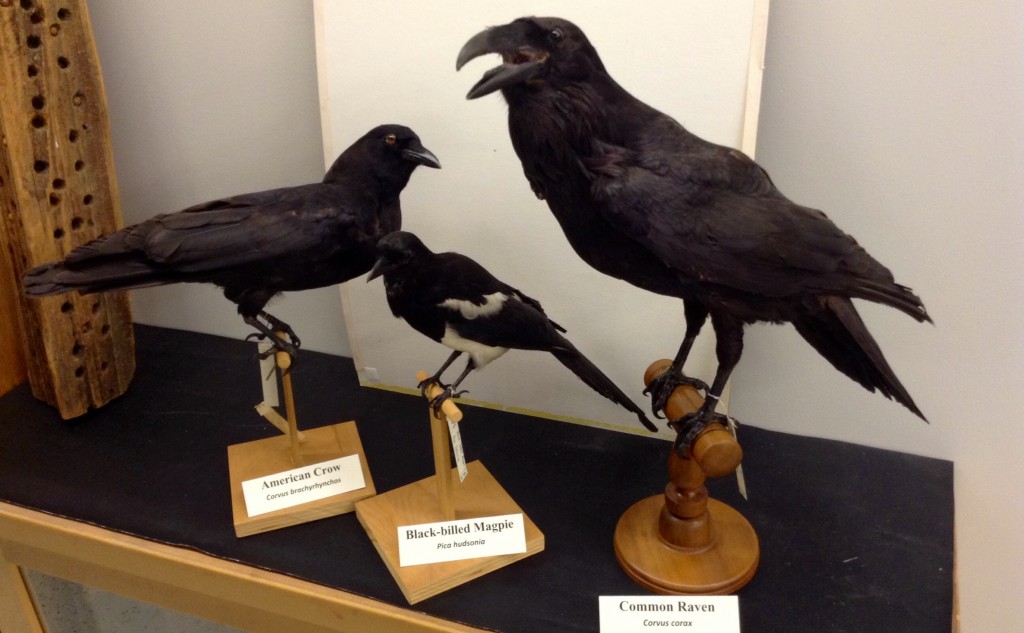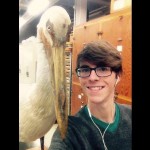In the 1960’s, Jane Goodall’s groundbreaking work with wild chimpanzees rattled the scientific world by striking down the notion that Homo sapiens alone deserves the title of “toolmaker.” Though chimpanzees have since been renowned for their human-like cognitive abilities, research over the last couple of decades of revealed that corvids (the bird family which includes crows and jays) deserve to be held in equal regard to our fellow apes.
Not only do crows use tools, some like the New Caledonian crow also make and modify them to solve an array of challenges. Since the forests of New Caledonia have a dearth of woodpeckers, the ever-ingenious resident crows have taken to crafting hooked tools in order to pull grubs and other morsels from within trees. In laboratory studies, New Caledonian crows have bent pieces of wire into hooks in order to retrieve bucket-shaped containers full of mealworms. When presented with similar tasks, human children were not able to solve this puzzle until around age 8. Such demonstrations of mental dexterity have led some researchers to referring to the corvids as “feathered apes.”

Representative members of the corvid family in the Tetrapod Collection at OSU’s Museum of Biological Diversity, ©Grant Terrell, 2016
Perhaps it should not be surprising that birds generally have very large brain-to-body ratios, because flight demands a sophisticated super-computer in order to process multiple variables while in the air. Crows have especially-large forebrains, the portion of the brain responsible for higher-level thinking, memory, and contemplation of sensory data. Like humans, crows possess an enlarged hippocampus. This structure of the brain is responsible for memory in vertebrates. This structure is proximal to the amygdala which is responsible for processing emotions. PET scans have shown that corvid brains use a feedback loop between these regions in order to evaluate their memories and attach them to an emotion. For example, a Common Raven may have a memory of a man who chased it from the bird feeder and while reminiscing about this event, they feel angry.
Avian behavior is far from mechanistic; for corvids especially, mental dexterity and curiosity prove to be important attributes. Wild Common Ravens have been observed surfing through the air and on snow, using pieces of bark as a makeshift sled. This behavior is not linked to any immediate reward and is instead thought to be an example of play in animals . Corvids are also extremely curious. Many crows have been observed picking up and examining human-made objects, including cigarettes. Like parrots, captive ravens can also learn to mimic human speech. Ever-adaptable, Swedish magpies have been shown that they are able to recognise friendly individuals that feed them. In one case, these magpies even learned that they could summon their friendly human for a snack by ringing a doorbell.
Corvids are an endlessly-adaptable and marvelously-sophisticated family of birds, yet they are among the least admired by the public. Perhaps this is a result of how much corvids remind us of ourselves. Their versatile nature leads them to be viewed as a weedy species, not unlike humans. Still, this adaptability makes corvids one of the few groups to thrive in the presence of humans. Rather than being feared or hated, these brainy birds should be elevated to the regard in which society now holds the great apes. At the very least, a short reflection on the intellect of corvids should finally sound the end of the “bird brain” insult.
About the Author: Grant Terrell is a 2nd year majoring in Evolution & Ecology at The Ohio State University and works as a Research Assistant at the Museum of Biological Diversity in the Tetrapod Collection.
References:
Marzluff, John M., and Tony Angell. Gifts of the Crow: How Perception, Emotion, and Thought Allow Smart Birds to Behave like Humans. New York: Free, 2012. Print.
Morell, Virginia. Animal Wise: The Thoughts and Emotions of Our Fellow Creatures. N.p.: Crown, 2013. Print.

